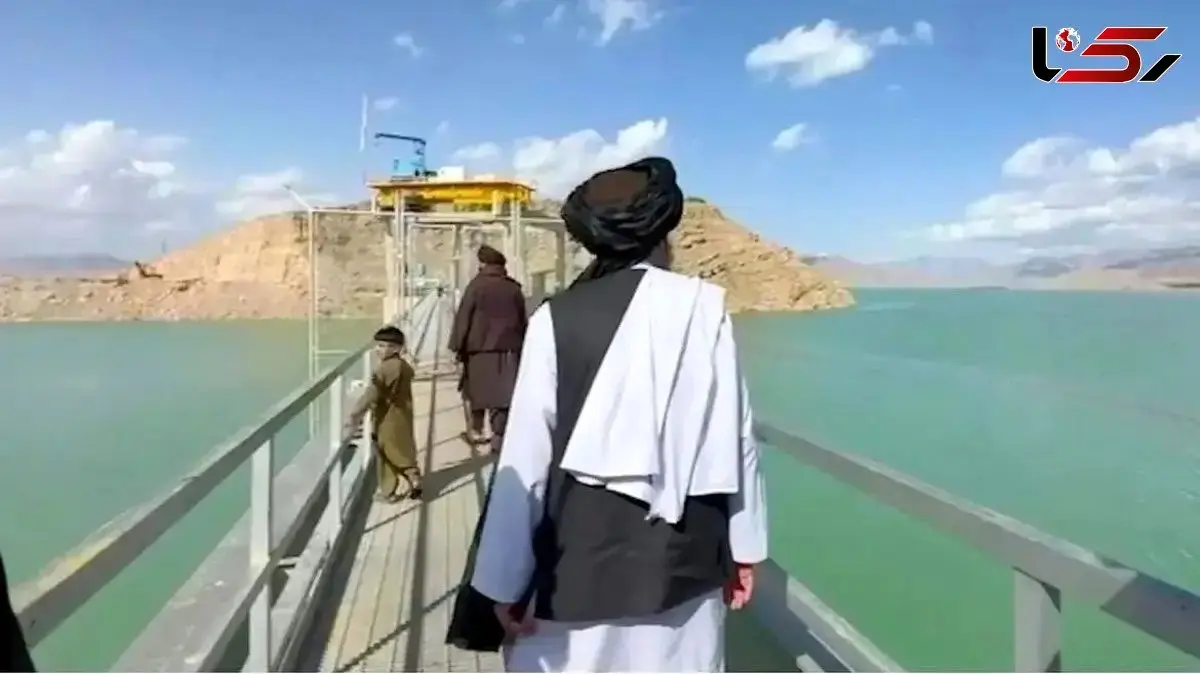Islamic Republic Newspaper:
The Issue of Hirmand Water Rights and the Controversial Claims of the Taliban Minister
Rokna Political Desk: The claims made by the Taliban minister regarding drought and the fulfillment of Hirmand water rights contradict the actions of this government to divert water toward the Godzareh salt marsh. Why does the Taliban oppose modifying the Kamal Khan Dam?

ARSHID ABEDI, a journalist from Sistan, wrote in Islamic Republic Newspaper:
Nooruddin Azizi, Afghanistan’s Minister of Industry and Trade, who had traveled to Sistan for negotiations concerning the construction of a second route at the Milak border crossing, increasing border exchanges, and enhancing the use of Chabahar port, cited Afghanistan’s drought as the reason for the non-delivery of Iran’s Hirmand water rights when confronted with Iran’s demand. He claimed: “God forbid, we have no hostility or motive to divert the water route. What is happening is a natural situation caused by severe drought!”
The Taliban minister’s contradictory statements reflect the duplicity of the Taliban regarding Afghanistan’s political approach. The main reason for the non-fulfillment of Hirmand water rights by Afghan authorities is the diversion of the river’s water toward the Godzareh salt marsh. Yet the Taliban minister first identified Afghanistan’s drought as the reason for the failure to deliver the water rights, and then referred to the issue of water diversion—claiming the self-governing Taliban administration has no motive to divert the water.
Beyond Nooruddin Azizi’s contradictory remarks, he has also made glaringly false statements on the two issues of “drought” and the lack of motivation to divert the Hirmand River’s water.
After the Kamal Khan Dam became operational, its diversion system has caused the bulk of the Hirmand River’s seasonal floods to be redirected toward the Godzareh salt marsh every year. Satellite images confirm this claim. In some years, two billion cubic meters of water and in others—such as last year’s water year—up to four billion cubic meters, have been diverted toward Godzareh. Contrary to the Taliban minister’s claims, at the time of the dam’s inauguration, Afghanistan’s Ministry of Water and Energy and the National Development Company during the Republican period officially announced that the dam was constructed to revive 49,000 hectares of Godzareh lands and settle 49,000 Pashtun families.
This Afghan action reflects a longstanding policy of social engineering and expanding the settlement of Pashtun naqel communities as a means of preserving power, a policy ongoing since the era of Yaqub Khan. After the Kamal Khan Dam became operational, Ashraf Ghani’s presidency did not last long, and under the Doha Agreement, Afghanistan was handed to the Taliban. Yet despite the change in government, the diversion of Hirmand River floods by the Kamal Khan Dam continues, and even Afghanistan’s Water Commissioner under the Taliban openly opposed modifying the dam in the Iran–Afghanistan water commissioners’ meeting.
If the self-proclaimed Taliban government has no motive to divert the Hirmand River’s water, why did it explicitly oppose modifying the Kamal Khan Dam? Why should the Hirmand floodwaters empty into the Godzareh salt marsh instead of being used by Baloch farmers in Afghanistan’s Nimruz Province and meeting Iran’s Hirmand water rights? If diverting water to Godzareh is not meant for reviving lands in that region, then it amounts to wasting water, which is religiously objectionable.
The continued diversion of the Hirmand River toward Godzareh and the non-delivery of water rights under the false pretext of drought is effectively a continuation of the policy pursued during the Republic era. If the Taliban truly lack any motive to divert the Hirmand River’s water, they can demonstrate goodwill by modifying the Kamal Khan Dam’s diversion system.
Send Comments